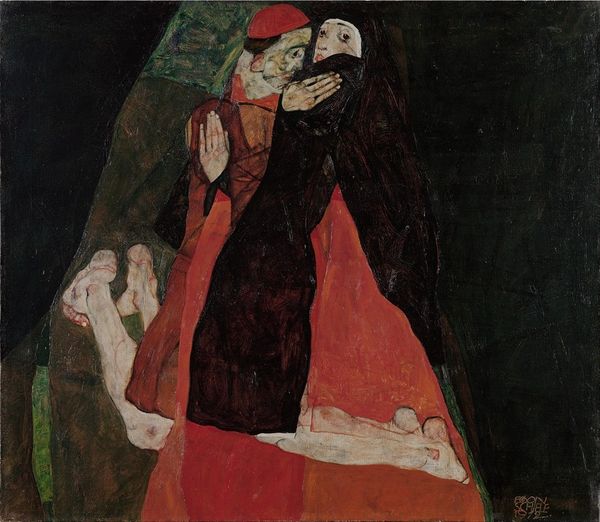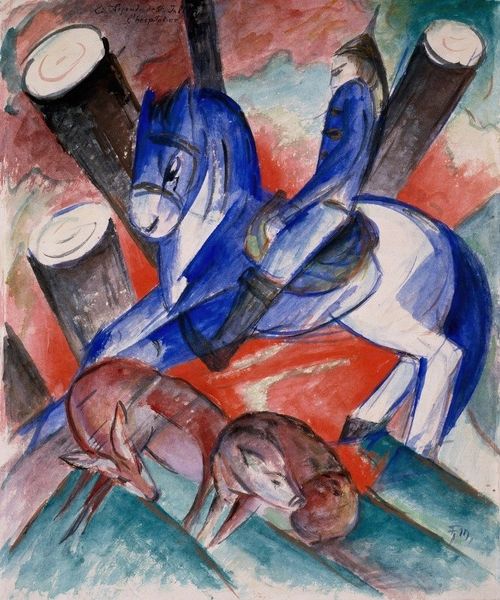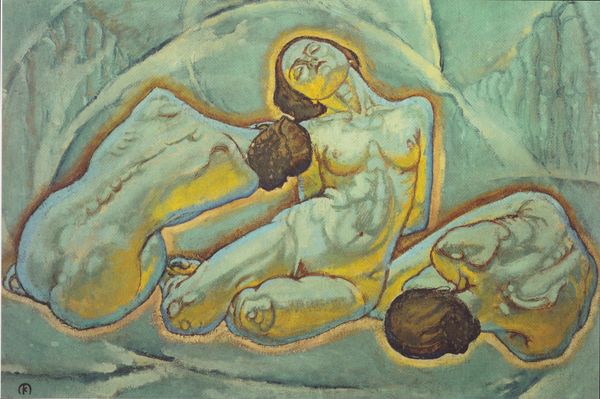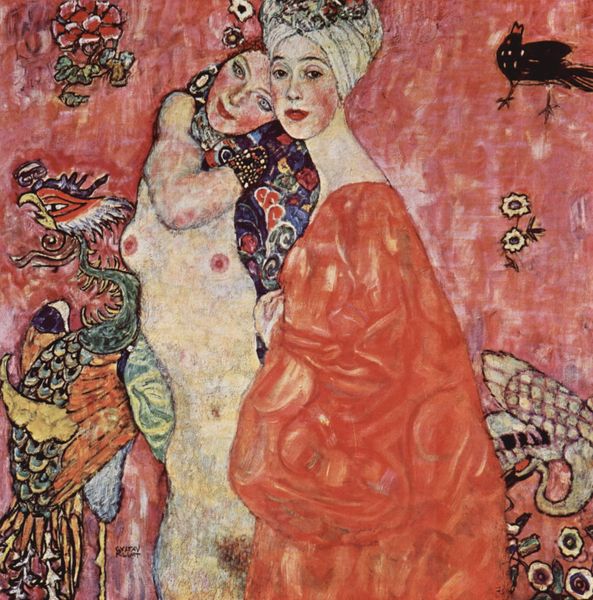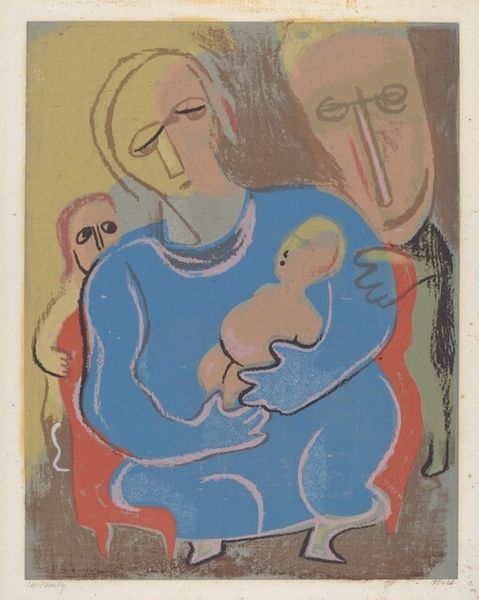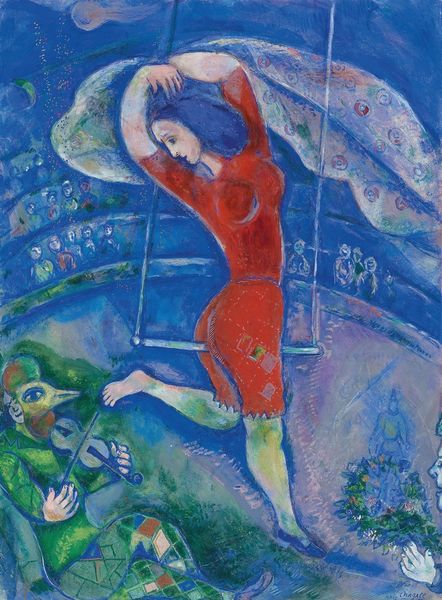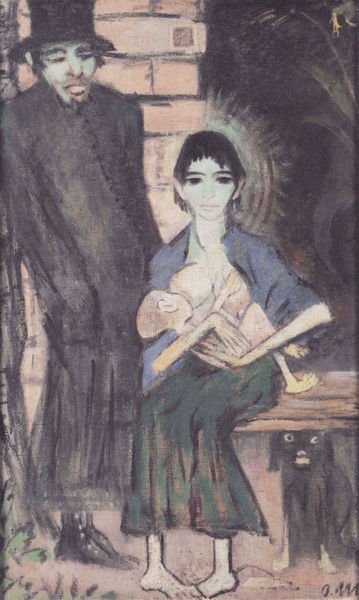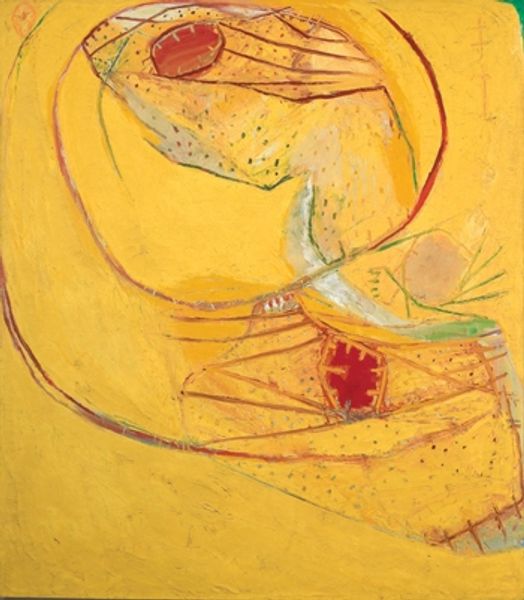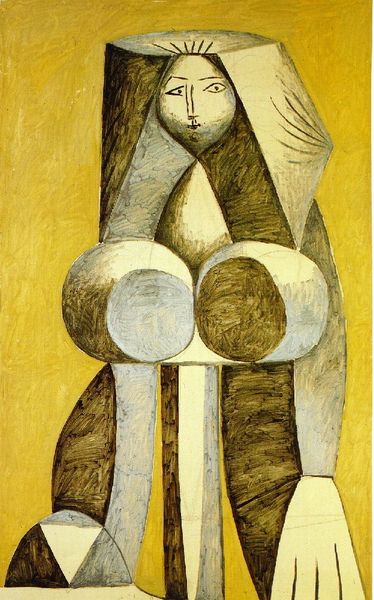
painting, oil-paint
#
portrait
#
cubism
#
painting
#
oil-paint
#
figuration
#
oil painting
#
geometric
#
modernism
Copyright: Candido Portinari,Fair Use
Curator: Well, first impression? It's... a bit melancholic, wouldn't you say? Like a stained-glass window in a minor key. Editor: That's intriguing. We're looking at "Denise com carneiro branco," or "Denise with White Lamb," painted in 1961 by the Brazilian artist Candido Portinari. It's oil on canvas. I'm curious about that initial feeling you get – that melancholy. Curator: The fractured planes create this feeling of fragility. She seems almost trapped within these geometric confines, like a precious artifact, or a holy image caught between worlds. The little girl has big sad eyes. Editor: Portinari was known for incorporating social and political commentary into his art. Do you think that fragmentation alludes to a fractured society? Perhaps childhood innocence amidst some kind of social struggle? Curator: It certainly hints at a sense of displacement, though perhaps more internal than explicitly societal. Cubism often reflects fragmented experiences, inner turmoil... Editor: So you read her wistful gaze, coupled with her precious toy lamb, as indicative of psychological fragmentation rather than directly protesting material or political conditions. The way Portinari painted her, she reminds me of the old world icons of Eastern Europe – or early American devotional painting. What about the white lamb? Do you think there's some intentional connection of a certain tradition through the girl's relation with it? Curator: Precisely! The lamb itself has profound iconographic roots – traditionally representing innocence, gentleness, sacrifice. Its presence lends a layer of symbolic weight to the portrait, contrasting with that modernist geometric structure behind the figure. I believe, the white lamb as a signifier connects directly with religious devotion but painted by Portinari is almost faded by modern times. Editor: Interesting. Perhaps Portinari used those sharp geometric forms to evoke a sense of the industrial age disrupting childhood innocence. It is more sad to imagine she cannot comprehend. What remains is, an uncomprehending, simple form of innocence and fragility caught within the complex machinery of existence. Curator: I completely agree. These elements, fused, give us something very complex. "Denise com carneiro branco" carries, at the end, so many stories. It feels simultaneously intimate and universal, and makes her iconic. Editor: Well, thinking of all these symbolic layers surely enhances the work for our visitors.
Comments
No comments
Be the first to comment and join the conversation on the ultimate creative platform.

